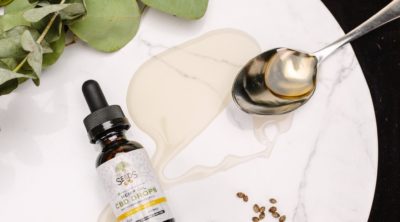
Prickly heat is a condition in which a reddish rash appears on different parts of the body, especially the armpits, groin, elbows, breasts, thighs, etc. This rash gives a terribly uncomfortable and stinging sensation.
Prickly heat (miliaria rubra), also known as heat rash, appears in the form of tiny red bumps on different parts of the body. The groin, thighs, back, armpits, breasts, knees, and waist are commonly affected areas. This condition occurs when the narrow ducts carrying sweat get clogged, due to excessive sweating. Sweat gets trapped within and results in inflammation, which further triggers irritation, itching, and discomfort. This in turn impedes the skin from regulating its own temperature effectively.
This skin problem can affect anybody from babies to adults to older folks. However, some people are genetically more prone to be affected by it. Those exposed to heat for long periods of time are also at a greater risk of developing this rash. Poor hygiene, allergies to deodorants, excessive outdoor activities in hot and humid weather, high fever, being over-clothed, obesity, etc., can also be causative factors.
Symptoms
- Tiny, fluid-filled blisters on the skin
- Red, itchy rash on groin, armpits, feet, etc.
- Burning or stinging sensation
- Rash on thighs causes difficulty in walking.
- Prickly heat rash in babies is seen as diaper rash.
- Mild swelling in the affected area.
Alleviating Prickly Heat Rash
Doctors prescribe antihistamine tablets and corticosteroid creams or lotions (with methanol) to treat this rash. Some people apply the highest factor of sunscreen available, however, for those with eczema, application of sunscreen worsens the condition. Moreover, those with sensitive skin need to be really careful about what they apply on their skin. There are several natural remedies that can be tried out as well.
Cooling the Skin
When struggling with prickly heat, the best way to soothe the skin is by cooling it. To cool the skin, place wet flannel onto the affected areas, and wait for the cold flannel fibers to soothe the skin. Taking a bath or swim will also help. After bathing, make sure the skin is completely dry, however, instead of using a towel use a blowing fan, because friction of any kind can be quite painful.
Drink Citrus Juices
Another way of cooling down the body is by drinking a lot of citrus juices. The juice of oranges, lemons, pineapples, etc., help lower the body temperature and reduce the stinging sensation caused by prickly heat. Just eating slices of watermelon will also help cool the body and reduce itching.
Cornstarch
Add a little water to some cornstarch and prepare a runny paste. Apply this paste on the areas of the body plagued with prickly rash, and allow it to work on the rash for the next half an hour. Once it dries, wash it off gently and dry your skin.
Miracle Paste
This special paste brings about great relief. To prepare this paste combine equal amounts of coriander seeds, sandalwood, roots of poppy-seed grass, and nutgrass tubercle. Add some rose-water to form a runny paste. Apply the paste onto the affected areas and leave for it sometime. Have a cold water bath and wash it off. Prickly heat occurs mainly in those areas where friction from clothing is the highest, so wear loose clothing.
Avoid Diapers for a While
Babies are more prone to be affected by this rash, as their sweat glands are not fully developed. Leaving them without diapers for some time will help the area remain dry. This will also help the healing process. Moreover, once the rash heals, make sure you change the diaper frequently, to avoid recurrence. Since a baby’s skin is very sensitive, it is wise not to try out any ointments or home remedies without consulting the pediatrician.
People suffering from this rash must try to keep their skin cool and dry at all times. One can use talcum powder (to soak up the sweat) or antiperspirants to keep the skin dry. Overall prickly heat is a temporary condition that will heal in a few days time.
Disclaimer: This article is for informative purposes only and does not in any way attempt to replace the advice offered by a medical expert.


